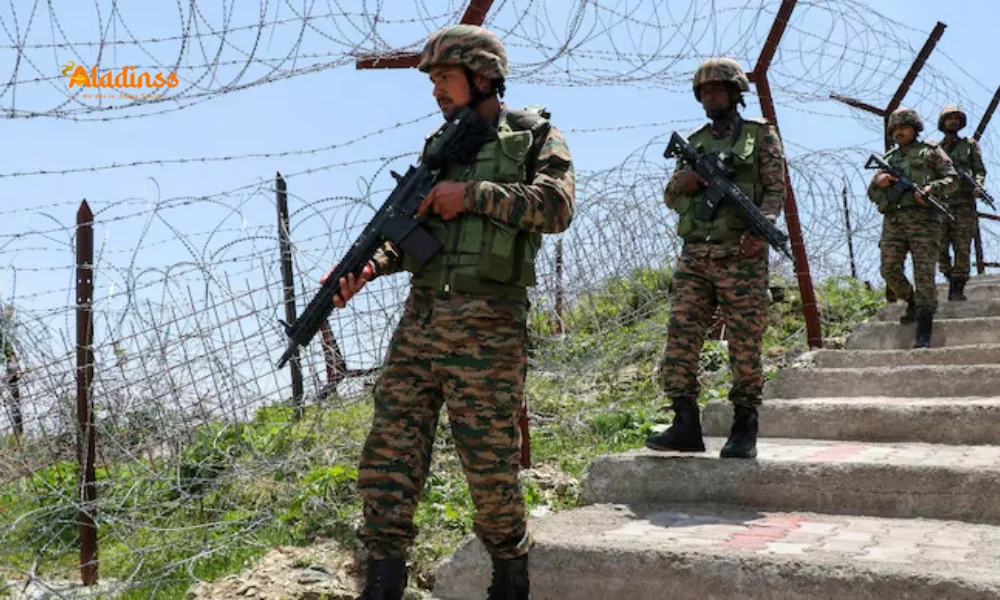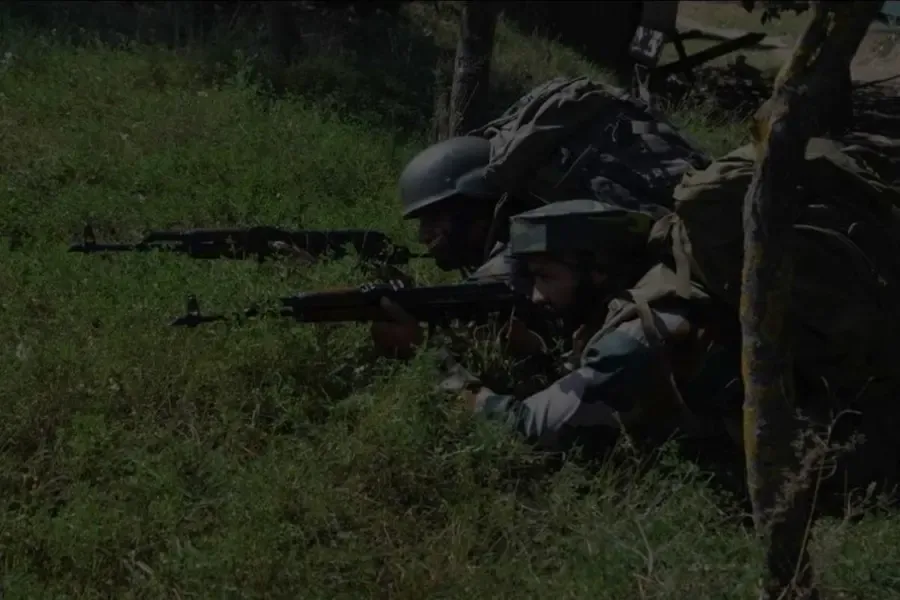Two Terrorists Killed in J&K Gurez Infiltration Attempt

Two Terrorists Neutralized in Foiled Infiltration Attempt in J&K’s Gurez
In a decisive counter-terrorism operation on August 28, 2025, security forces successfully thwarted an infiltration attempt along the Line of Control (LoC) in the Gurez sector of Jammu and Kashmir’s Bandipora district, neutralizing two terrorists. The joint operation, named Naushera Nar IV, was conducted by the Indian Army and Jammu and Kashmir Police, highlighting their coordinated efforts to safeguard the region from cross-border terrorism. This incident underscores the ongoing vigilance required to maintain security in one of India’s most sensitive border areas.
Operation Naushera Nar IV: How It Unfolded
The operation was initiated based on actionable intelligence provided by the Jammu and Kashmir Police, which indicated a potential infiltration attempt in the Gurez sector. The Indian Army’s Srinagar-based Chinar Corps, responsible for security operations in the Kashmir Valley, launched a joint operation with the police to intercept the infiltrators. Alert troops detected suspicious movement near the LoC, and when challenged, the terrorists opened indiscriminate fire. The security forces responded with precision, neutralizing both terrorists in a swift and effective counteraction.
The Chinar Corps shared details of the operation on X, stating, “Based on intelligence provided by Jammu and Kashmir Police regarding a likely infiltration attempt, a joint operation was launched by Indian Army and J&K Police in Gurez Sector. Alert troops spotted suspicious activity and challenged, which resulted in terrorists opening indiscriminate fire. Troops responded with effective fire, neutralising two terrorists.” The operation remains ongoing to ensure the area is secure and to recover any arms or materials left by the infiltrators.
Strategic Significance of the Gurez Sector
The Gurez sector, nestled in the rugged terrain of Bandipora district, is a strategically vital area along the LoC due to its proximity to Pakistan-administered Kashmir. Its mountainous landscape, dense forests, and high-altitude passes make it a favored route for infiltrators, particularly during the summer months when snowmelt facilitates movement. The Indian Army maintains a robust presence in Gurez, alongside other vulnerable sectors like Uri and Kupwara, to counter such threats. The successful operation in Gurez demonstrates the effectiveness of India’s multi-layered security grid, which includes ground patrols, advanced surveillance, and real-time intelligence.
The Gurez sector has been the site of multiple infiltration attempts in recent years, with security forces foiling similar bids in August 2025 alone. The region’s challenging terrain and strategic location make it a focal point for counter-terrorism operations, requiring constant vigilance to prevent militant incursions. The neutralization of two terrorists in this operation is a significant achievement, reinforcing the Army’s commitment to securing India’s borders.

Surge in Infiltration Attempts Along the LoC
The Gurez operation comes amid a noticeable increase in infiltration attempts along the LoC, particularly in north Kashmir’s Gurez, Uri, and Kupwara sectors. Security officials report that Pakistan-based militant groups are intensifying efforts to push operatives into Jammu and Kashmir to bolster their dwindling ranks. Local recruitment into militancy has plummeted, with only one local youth joining militant groups in 2025, compared to nearly 200 in 2018, according to security agency data. This decline has forced groups like Lashkar-e-Taiba and Jaish-e-Mohammed to rely on foreign terrorists, leading to a spike in cross-border infiltration bids.
The timing of these attempts is critical, as militants aim to cross the LoC before winter snows block mountain passes. The Indian Army’s proactive operations, supported by advanced surveillance and intelligence, have disrupted these efforts, with multiple successful encounters in August 2025. For instance, on August 25, a similar infiltration bid was foiled in the Uri sector of Baramulla district, followed by extensive search operations to ensure no terrorists had crossed into Indian territory.
Intelligence and Coordination: Key to Success
The success of Operation Naushera Nar IV highlights the pivotal role of intelligence and inter-agency coordination in countering terrorism. The Jammu and Kashmir Police’s timely intelligence enabled the Indian Army to deploy troops strategically, intercepting the infiltrators before they could cross the LoC. The joint operation exemplifies the synergy between the Army and police, which has been critical in dismantling the terror ecosystem in Jammu and Kashmir. This collaboration extends beyond direct encounters to include efforts to disrupt financial networks, hawala rackets, and drug smuggling operations that sustain militant activities.
The Army’s use of advanced technologies, such as drones and thermal imaging, has enhanced its ability to detect and neutralize threats along the LoC. The Chinar Corps’ swift response in Gurez, combined with ongoing search operations, ensures that the area remains secure and that any potential accomplices or hidden materials are identified. This multi-layered approach has significantly reduced the success rate of infiltration attempts, bolstering regional security.
Recent Security Operations in Jammu and Kashmir
The Gurez operation is part of a series of successful counter-terrorism efforts in Jammu and Kashmir in August 2025. On August 25, security forces foiled an infiltration bid in the Uri sector, demonstrating their readiness to tackle threats across multiple fronts. Earlier, on August 13, a soldier lost his life in a gunfight with infiltrators in Uri, underscoring the risks faced by security personnel. On August 27, the Chinar Corps mourned the loss of Havildar Ikbal Ali, who died while performing operational duties in Kupwara district, highlighting the sacrifices made to ensure the region’s safety.
These incidents reflect the persistent threat posed by cross-border terrorism, even as the security situation in Jammu and Kashmir has improved significantly. The decline in local militancy, coupled with proactive operations, has reduced the number of active militants to fewer than 50, according to security estimates. However, the surge in infiltration attempts underscores the need for sustained vigilance to prevent a resurgence of violence.
Impact on Regional Stability
The neutralization of two terrorists in Gurez is a significant setback for militant groups attempting to destabilize Jammu and Kashmir. The operation reinforces the Indian Army’s resolve to maintain a zero-tolerance policy toward cross-border terrorism. By disrupting infiltration attempts, security forces are not only protecting the region’s residents but also sending a strong message to external actors supporting militancy. The decline in local militant recruitment, now at its lowest in over a decade, further weakens the terror infrastructure, limiting the operational capacity of groups like Lashkar-e-Taiba and Jaish-e-Mohammed.
The broader impact of such operations extends to fostering confidence among local communities, who have increasingly distanced themselves from militancy. Community engagement initiatives, such as youth development programs and vocational training, have played a crucial role in reducing the appeal of militancy, particularly among young people. The government’s focus on development, coupled with robust security measures, has created a more stable environment, with tourism and economic activity in the region witnessing a steady rise.
Strengthening Border Security Measures
To address the ongoing threat of infiltration, security forces are implementing a comprehensive strategy. This includes deploying additional troops in high-risk sectors, enhancing surveillance with cutting-edge technologies, and strengthening intelligence networks. The use of drones, thermal imaging, and satellite monitoring has improved the Army’s ability to detect movement along the LoC, while ground patrols ensure rapid response capabilities. Collaboration with local communities is also being prioritized to gather grassroots intelligence and build trust.
Beyond tactical measures, the government is targeting the financial and logistical networks that sustain terrorism. Operations against hawala rackets, drug smuggling, and overground workers have disrupted the flow of resources to militant groups, further weakening their operational capacity. These efforts, combined with sustained counter-insurgency operations, aim to ensure long-term peace and stability in Jammu and Kashmir, paving the way for economic growth and development.
Comment / Reply From
No comments yet. Be the first to comment!











